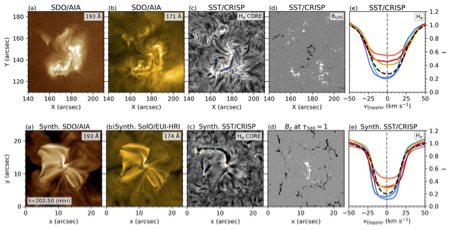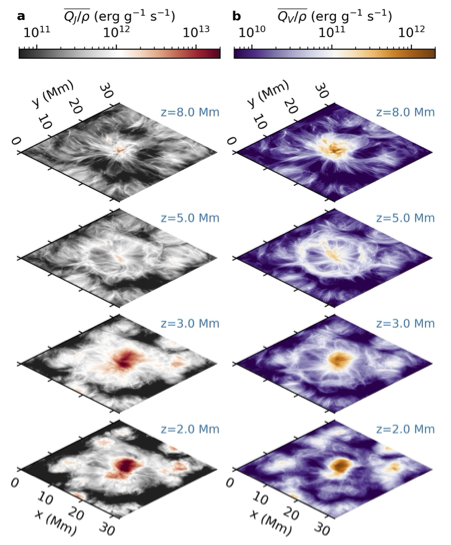Coronal Bright Points
| Nugget | |
|---|---|
| Number: | 462 |
| 1st Author: | Daniel Nóbrega-Siverio |
| 2nd Author: | |
| Published: | November 27, 2023 |
| Next Nugget: | TBD |
| Previous Nugget: | Aurora-like Radio Emission from a Sunspot |
Introduction
Understanding why the temperature of the solar corona is a few hundred times larger than that at the surface requires studying the heating mechanisms across different solar regions and phenomena. A particularly important case is that of the coronal bright points or CBPs. These are ubiquitous structures with projected sizes between 5 and 40 Mm composed of small-scale loops that stand out in the Sun by their strong X-ray and/or extreme-ultraviolet (EUV) emission for hours to days. In addition, CBPs can be the source of coronal jets and small-scale filament eruptions. So far, the existing CBP models have been very idealized, missing crucial aspects of the physics of the Sun, such as the energization of the magnetic structures by surface convection and the radiative transfer to explain the coldest solar atmospheric layers.
Numerical Models
In Ref. [1] we present a comprehensive 3D radiative-MHD model using the "Bifrost" code for a CBP based on a magnetic "null point" configuration, a common field-line topology related to this kind of phenomenon. We have shown that CBPs can be energized, for at least several hours, through the continuous action of stochastic photospheric convective motions, thus obviating the need for major, organized photospheric flows such as converging flows or large-scale surface flows. We have also detected continuous upflows with faint EUV signal related to the CBP, resembling observational dark coronal jets, and small-scale eruptions when Hα fibrils interact with a magnetic reconnection site (see Fig. 1).

Heating
Our investigation reveals that the CBP loops are heated by both Joule and viscous heating predominantly in the lower atmosphere, around the CBP's inner spine at a few megameters above the solar surface, with a secondary contribution at coronal heights close to the reconnection site (see Fig. 2). This is a major difference with 2D models, which can only capture the heating at the reconnection site itself. Important mechanisms, such as magnetic field-line braiding, are intrinsically three-dimensional. We have also found spatial and time correlation between the Joule and viscous heating within the CBP, which suggests that the heating results obtained may be widely independent of the value of the magnetic Prandtl number. This implies that, even though current numerical models are far from reproducing the Prandtl numbers of the solar atmosphere, our results may well be applicable to understand the heating of small-scale loops (CBPs) and their properties.
Confronting the Modeling with Observations
To validate our theoretical model, we present simultaneous observations of a representative CBP from space (from SDO) and from the ground (from the SST). These observations are compared with observable diagnostics calculated from the numerical results for EUV wavelengths as well as for the Hα line (see Fig. 3). The similarities between the synthetic observables from the model and the observations are striking, reproducing the bright EUV rowel-like structure of the CBP, and chromospheric features such as the brightenings in the core of the Hα line, the dark and elongated Hα fibrils, as well as their magnetic photospheric connections.

References
[1] "Deciphering the solar coronal heating: Energizing small-scale loops through surface convection"
